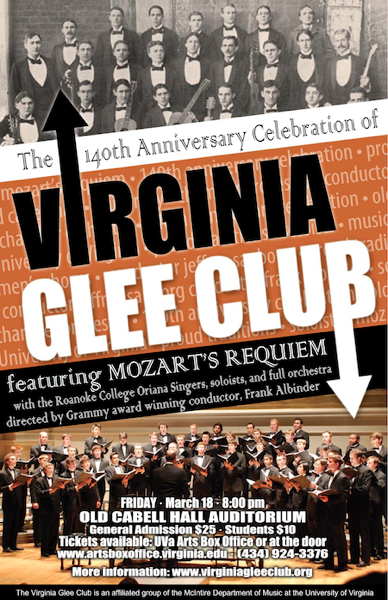Gearing up for today’s UVa football game against Indiana is a lot more fun now that my daughter is old enough to enjoy the game. Since last week she’s been imploring me to “sing ‘The Good Old Song,’ daddy! –and the second verse!” I’ve also started to teach her “Virginia, Hail, All Hail.”
One Virginia song that I won’t be teaching her is “From Rugby Road to Vinegar Hill.” This most problematic, often hand-wrung-about of the Virginia songs is unlike any of the other ones I’ve written about because there is no clear author–as well as little among the lyrics that can be sung in public. But I think that if you put on a different hat, that of the folk song collector, it’s easy to find something to admire in the song, even sober.
One of the Glee Club’s past officers was Arthur Kyle Davis, Jr., about whom I’ve written before. His Traditional Ballads of Virginia shows how folk songs change as they are passed from person to person, and even how some lyrics move from song to song; for instance, verses of “Lady Isabel and the Elf-Knight” (known in Virginia as “Pretty Polly”) fetch up in “Young Hunting” (known as “Lord Henry” or, in Bob Dylan’s rendition, “Love Henry”). Also, melodies tend to get reused from song to song, with lyrics appropriate for the occasion being fit to much older tunes.
So it is with “From Rugby Road to Vinegar Hill.” Let’s start with the tune. Like many Virginia songs–“The Good Old Song” from “Auld Lang Syne,” “Oh Carolina” from “Clementine,” “Hike Virginia” from “Hot Feet,” “Just Another Touchdown for U.Va” from “Just a Little Bit Off the Top”–“Rugby Road” recycles another tune. In this case, the roots of the tune reach back to Charles Ives’ “Son of a Gambolier,” penned in 1895, and maybe even to “The Bonnie Blue Flag,” a Confederate marching tune, but the immediate antecedent is “Ramblin’ Wreck from Georgia Tech.” The history of college songs generally is full of this sort of campus-to-campus transmission of melody, arguing for college songs as a special form of folk song.
Then there are the lyrics, and here the similarity to transmitted ballad songs is even more apparent. While the first verse is highly topical to Virginia, with echoes of the shot that killed John A. G. Davis on the Lawn in 1841 ringing through “The faculty are afraid of us, they know we’re in the right,” and the traditional poles of Grounds (“Rugby Road”) and downtown Charlottesville (“Vinegar Hill”) serving as the site of the revels, the second traditional verse is more timeless. The second verse of “Rugby Road” begins:
All you girls from Mary Washington and R.M.W.C.,
Don’t ever let a Virginia man an inch above your knee
Far from being a waggish invention of some Wahoo or other, this line is practically a lock-stock-and-barrel lift from “The Dundee Weaver” (2022 note: the original site is now dead, so here’s an archive link), a bawdy Glaswegian street song:
Come aa ye Dundee weavers an tak this advise fae me
Never let a fellae an inch abune yer knee
Does knowing the history of the song make it any less offensive to a modern, coeducational University? Maybe not, especially considering how very offensive are some of the other verses that have been dreamed up over the years. But I think trying to throw the song out in its entirety misses an important clue to how the college songs that Wahoos sing as they watch football–and drink–came about and why some persist.

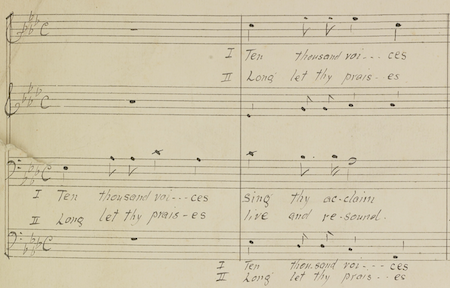
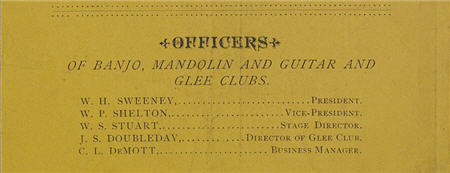

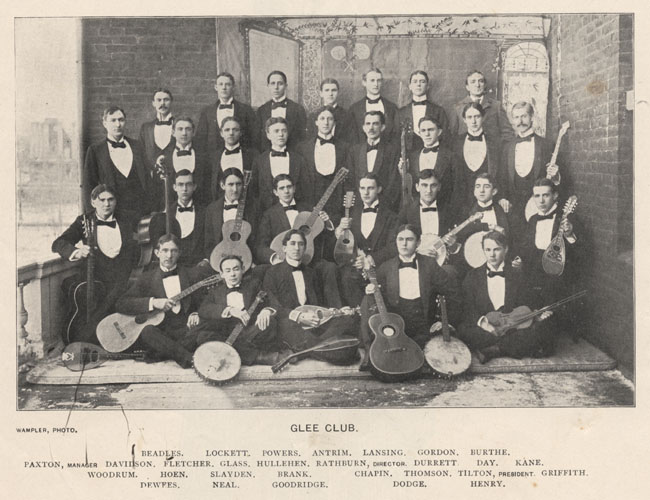
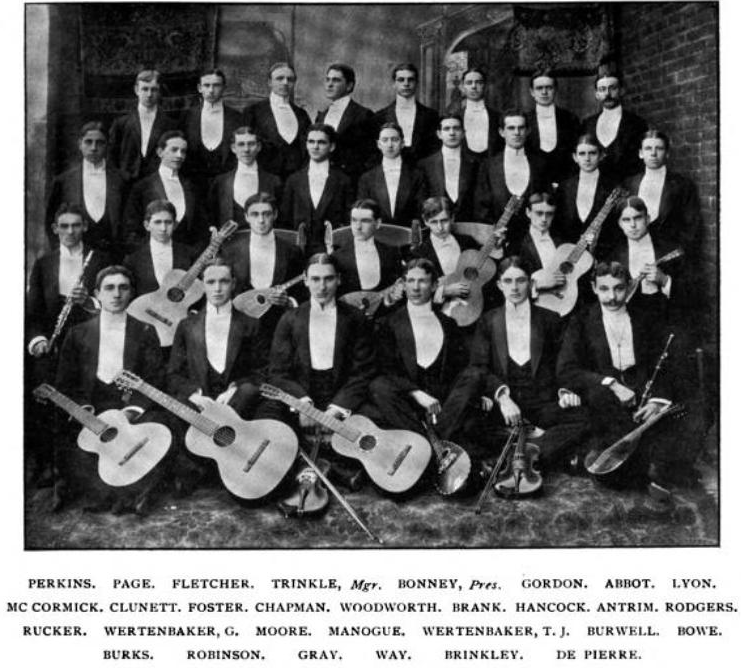
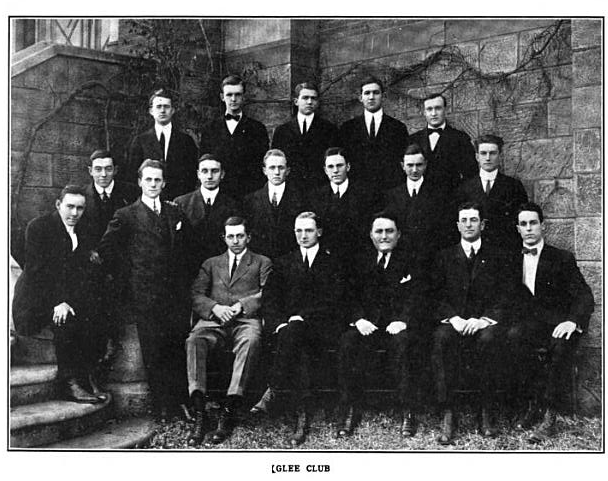
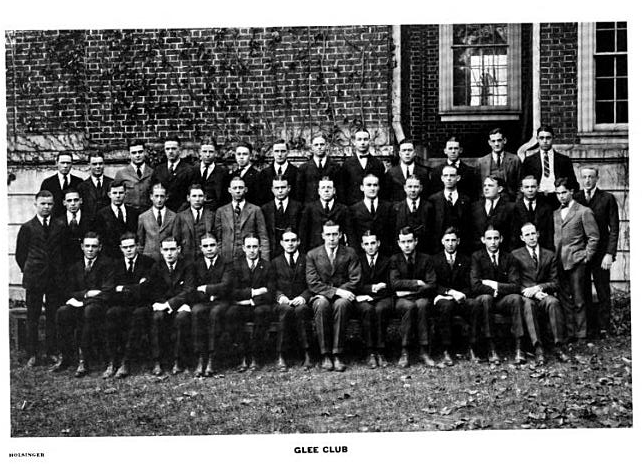
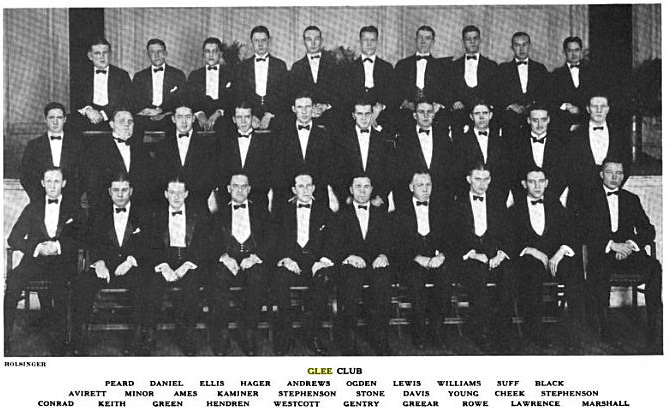
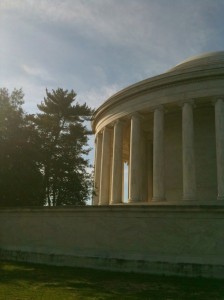 I drove down from Massachusetts to DC on Thursday, where I spent time at the Jefferson Memorial before catching up with my first year roommate Greg Greene. The next morning, I hopped back in the car and drove down, spending the morning and early afternoon in the Small Special Collections Library doing research before going on to the first cocktail party of the weekend.
I drove down from Massachusetts to DC on Thursday, where I spent time at the Jefferson Memorial before catching up with my first year roommate Greg Greene. The next morning, I hopped back in the car and drove down, spending the morning and early afternoon in the Small Special Collections Library doing research before going on to the first cocktail party of the weekend.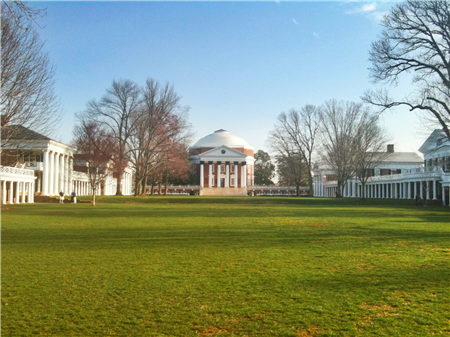
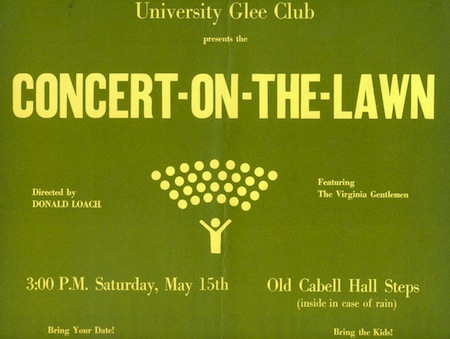
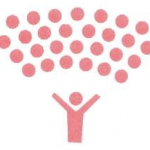 I think it’s fair to say that, based on the evidence that has survived, that there was really no distinctive graphic identity for the Glee Club prior to the mid-1960s. While it’s hard to say for sure–posters and other large printed ephemera are rarer in the historian’s archives than programs–all the printed matter I have before 1965 is simple, generally typeset, and consistent, probably in a University “house” style. This started to change once Donald Loach took over leadership of the group. As early as
I think it’s fair to say that, based on the evidence that has survived, that there was really no distinctive graphic identity for the Glee Club prior to the mid-1960s. While it’s hard to say for sure–posters and other large printed ephemera are rarer in the historian’s archives than programs–all the printed matter I have before 1965 is simple, generally typeset, and consistent, probably in a University “house” style. This started to change once Donald Loach took over leadership of the group. As early as 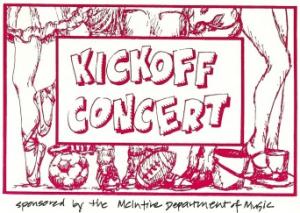 By the 1980s, a more hand drawn style had begun to emerge. The iconic Christmas wreath, as shown on the
By the 1980s, a more hand drawn style had begun to emerge. The iconic Christmas wreath, as shown on the 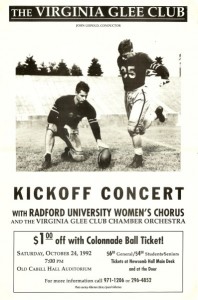 My contribution, other than general typographic contributions, was to add more photographic and representational imagery to the mix. Some of the posters I produced were simple retreads of designs that were already in use when I came on board (the
My contribution, other than general typographic contributions, was to add more photographic and representational imagery to the mix. Some of the posters I produced were simple retreads of designs that were already in use when I came on board (the 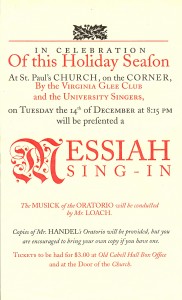 The other contribution I made was the “letterpress homage poster”–posters that mimicked presentation forms and styles from the letterpress era. Inspired by an English playbill poster that had been recreated in the Colonial Williamsburg printing office with honest to goodness movable type, I designed three posters in this style: a poster for the
The other contribution I made was the “letterpress homage poster”–posters that mimicked presentation forms and styles from the letterpress era. Inspired by an English playbill poster that had been recreated in the Colonial Williamsburg printing office with honest to goodness movable type, I designed three posters in this style: a poster for the 